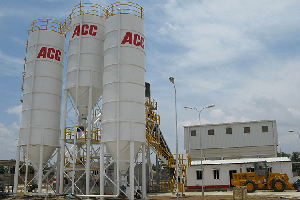Adani Portfolio delivers robust growth, EBITDA reaches record Rs 82,917 crore in FY24

Ahmedabad, June 2 (IANS) Despite external volatilities and headwinds, the Adani Portfolio of companies has delivered strong and consistent growth in FY24 and the past five years, which signifies the strength and stability of its businesses, the company said on Sunday.
In FY24, the Adani Portfolio of companies delivered a record EBITDA growth of 45 per cent (year-on-year), reaching Rs 82,917 crore (approximately $10 billion), which is the highest in the history of the Adani Portfolio.
Cash profit or funds flow from operations (FFO) was at Rs 56,828 crore (nearly $6.7 billion), “registering a growth of 51 per cent year-on-year, owing to its disciplined investment strategy providing high conversion of EBITDA into cash profit”, said the company.
A strong asset base built over three decades now stands at Rs 478,137 crore (approximately $57 billion), higher by 16 per cent. The assets now serve a consumer base of over 350 million users, with a fast-growing consumer franchise across airports, electricity distribution, smart metering, gas distribution, and a direct-to-consumer digital platform.
“Equity deployed to total assets is highest ever at 62 per cent, against 55 per cent in FY23,” said the company.
It added that cash reserves are now at highest-ever levels of Rs 59,791 crore (approximately $7 billion), up by 48.5 per cent YoY.
The core infra and utility platform generated Rs 69,337 crore or 84 per cent of the total EBITDA in FY24.
Predictable cash flows led to multiple rating upgrades across portfolio companies.
Adani Ports and Special Economic Zone became the first large-scale Indian infrastructure company to be rated ‘AAA’.
Now, three listed portfolio companies — APSEZ, Ambuja Cement and ACC — have the highest INR rating of ‘AAA’. Additionally, there are two ‘AAA’ rated entities under AESL, namely Alipurduar Transmission and Western Transmission, the company said.
Currently, the Adani Portfolio debt profile represents a balanced exposure to domestic banking, global banking and capital markets. “Of the total debt mix, domestic banking exposure stands at 36 per cent and domestic capital markets at 5 per cent, whereas 26 per cent is the exposure to the global banking market; the global capital market is at 29 per cent and the balance 4 per cent is with others,” the company emphasised.
–IANS
na/vd





